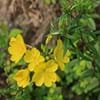Life Span
Perennial
Perennial
Type
Perennial
Broadleaf Evergreen
Origin
Northeastern United States, Mid-Atlantic United States, Southeastern United States, North-Central United States, Central United States, South-Central United States
Japan
Types
Apricot Delight, Copper canyon
Bigleaf hydrangea, Hortensia, Smooth hydrangea, Oakleaf hydrangea, Annabelle
Habitat
Roadsides, sand dunes, Waste areas
Forest edges, Hillside, Woods
USDA Hardiness Zone
5-8
6-10
AHS Heat Zone
8-1
Not Available
Sunset Zone
1a, 1b, 2a, 2b, 3a, 3b, 4, 5, 6, 7, 8, 9, 10, 11, 12, 13, 14, 15, 16, 17, 18, 19, 20, 21, 22, 23, 24
21,22
Habit
Clump-Forming
Oval/Rounded
Flower Color
Yellow
Purple
Flower Color Modifier
Bicolor
Bicolor
Leaf Color in Spring
Green
Dark Green
Leaf Color in Summer
Green
Dark Green
Leaf Color in Fall
Green
Dark Green
Leaf Color in Winter
Light Green
Dark Green
Leaf Shape
Oblong
Oblovate
Plant Season
Summer
Spring, Summer, Fall, Winter
Sunlight
Full Sun, Partial Sun
Partial Sun, Partial shade, Full Shade
Type of Soil
Loam, Sand
Loam
The pH of Soil
Acidic, Neutral, Alkaline
Acidic, Neutral
Soil Drainage
Well drained
Well drained
Bloom Time
Early Summer, Summer, Late Summer
Spring
Tolerances
Variety of soil types
Pollution, Drought, Salt
Where to Plant?
Container, Ground, Pot
Container, Ground
How to Plant?
Divison, Seedlings, Stem Planting
Seedlings, Stem Planting
Plant Maintenance
Low
Medium
Watering Requirements
Average Water Needs, Do Not over Water, Never Over-water, Requires regular watering, Water more in summer
Not Available
In Summer
Lots of watering
Average Water
In Spring
Moderate
Moderate
In Winter
Average Water
Average Water
Soil pH
Acidic, Neutral, Alkaline
Acidic, Neutral
Soil Type
Loam, Sand
Loam
Soil Drainage Capacity
Well drained
Well drained
Sun Exposure
Full Sun, Partial Sun
Partial Sun, Partial shade, Full Shade
Pruning
Remove damaged leaves, Remove dead branches, Remove dead leaves, Remove dead or diseased plant parts
Remove damaged leaves, Remove dead branches, Remove dead leaves
Fertilizers
All-Purpose Liquid Fertilizer, fertilize in growing season
All-Purpose Liquid Fertilizer
Pests and Diseases
Slugs, Snails
Red blotch
Plant Tolerance
Variety of soil types
Pollution, Drought, Salt
Flowers
Yes
Insignificant
Flower Petal Number
Single
Single
Foliage Texture
Fine
Medium
Foliage Sheen
Matte
Glossy
Attracts
Insects
Bees, Flies
Allergy
Abdominal pain, Constipation, Diarrhea, Skin irritation
Chest tightness, Diarrhea, Dizziness, Nausea, Vomiting
Aesthetic Uses
Beautification, Borders, Landscape Designing, Showy Purposes
Not Available
Beauty Benefits
Good for skin, Making cosmetics, Stops hair loss
Not Available
Edible Uses
Yes
Not Available
Environmental Uses
Air purification, Food for insects, Versatility
Air purification
Medicinal Uses
Eczema
Fever, Kidney problems, Urinary tract problems
Part of Plant Used
Root
Flowers, Root
Other Uses
Decoration Purposes, Medicinal oil, Showy Purposes, Used as Ornamental plant, Used for its medicinal properties
Not Available
Used As Indoor Plant
Yes
Not Available
Used As Outdoor Plant
Yes
Yes
Garden Design
Edging, Feature Plant, Groundcover, Mixed Border
Container, Feature Plant, Foundation, Hedges, Houseplant, Mixed Border, Topiary, Bonsai, Espalier
Botanical Name
OENOTHERA 'Cold Crick'
AUCUBA japonica f. longifolia 'Salicifolia'
Common Name
Suncups, sundrops
Japanese Aucuba, Japanese Laurel, Willowleaf Japanese Laurel
In Hindi
Evening Primrose
Hydrangea
In German
Evening Primrose
Hortensie
In French
onagre
Hortensia
In Spanish
onagra
Hortensia
In Greek
Νυχτολούλουδο
υδραγεία
In Portuguese
Evening Primrose
Hortênsia
In Polish
wiesiołka
Hortensja
In Latin
vespere Primrose
Hibiscus
Phylum
Magnoliophyta
Not Available
Class
Magnoliopsida
Not Available
Order
Myrtales
Not Available
Family
Onagraceae
Cornaceae
Genus
Oenothera
Not Available
Clade
Angiosperms, Eudicots, Rosids
Not Available
Tribe
Onagreae
Not Available
Subfamily
Onagroideae
Not Available
Number of Species
Not Available
Season and Care of Evening Primrose and Japanese Aucuba
Season and care of Evening Primrose and Japanese Aucuba is important to know. While considering everything about Evening Primrose and Japanese Aucuba Care, growing season is an essential factor. Evening Primrose season is Summer and Japanese Aucuba season is Summer. The type of soil for Evening Primrose is Loam, Sand and for Japanese Aucuba is Loam while the PH of soil for Evening Primrose is Acidic, Neutral, Alkaline and for Japanese Aucuba is Acidic, Neutral.
Evening Primrose and Japanese Aucuba Physical Information
Evening Primrose and Japanese Aucuba physical information is very important for comparison. Evening Primrose height is 1.00 cm and width 0.10 cm whereas Japanese Aucuba height is 240.00 cm and width 150.00 cm. The color specification of Evening Primrose and Japanese Aucuba are as follows:
Evening Primrose flower color: Yellow
Evening Primrose leaf color: Green
Japanese Aucuba flower color: Purple
- Japanese Aucuba leaf color: Dark Green
Care of Evening Primrose and Japanese Aucuba
Care of Evening Primrose and Japanese Aucuba include pruning, fertilizers, watering etc. Evening Primrose pruning is done Remove damaged leaves, Remove dead branches, Remove dead leaves and Remove dead or diseased plant parts and Japanese Aucuba pruning is done Remove damaged leaves, Remove dead branches and Remove dead leaves. In summer Evening Primrose needs Lots of watering and in winter, it needs Average Water. Whereas, in summer Japanese Aucuba needs Average Water and in winter, it needs Average Water.





